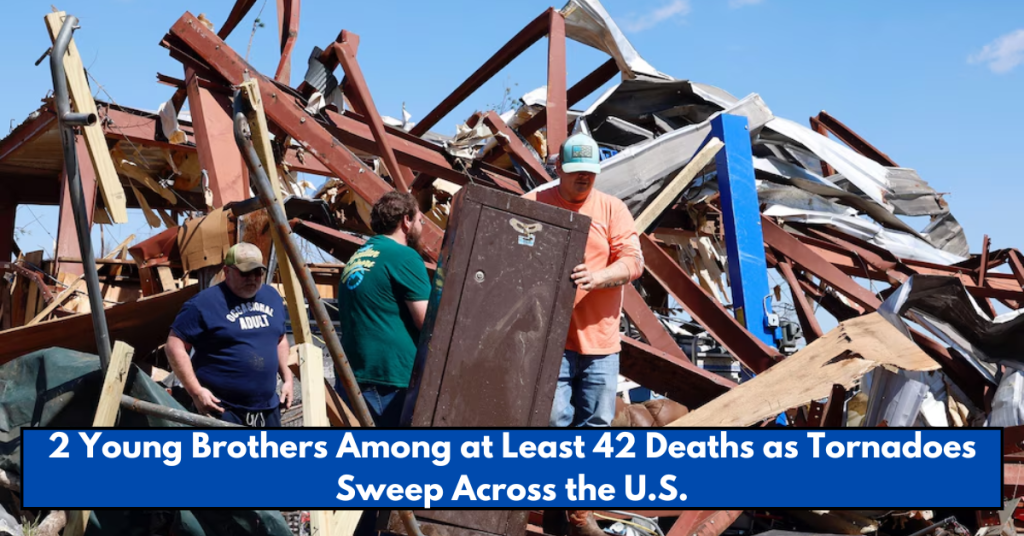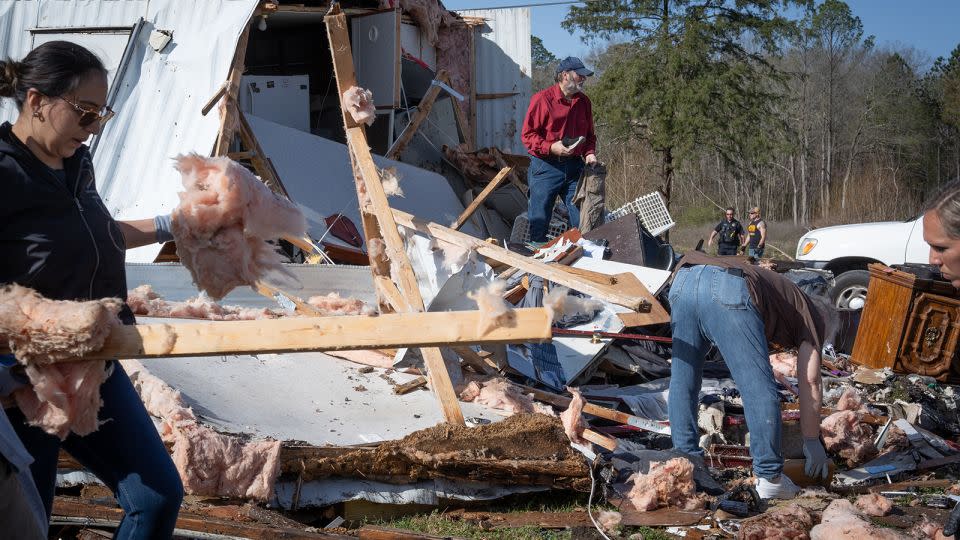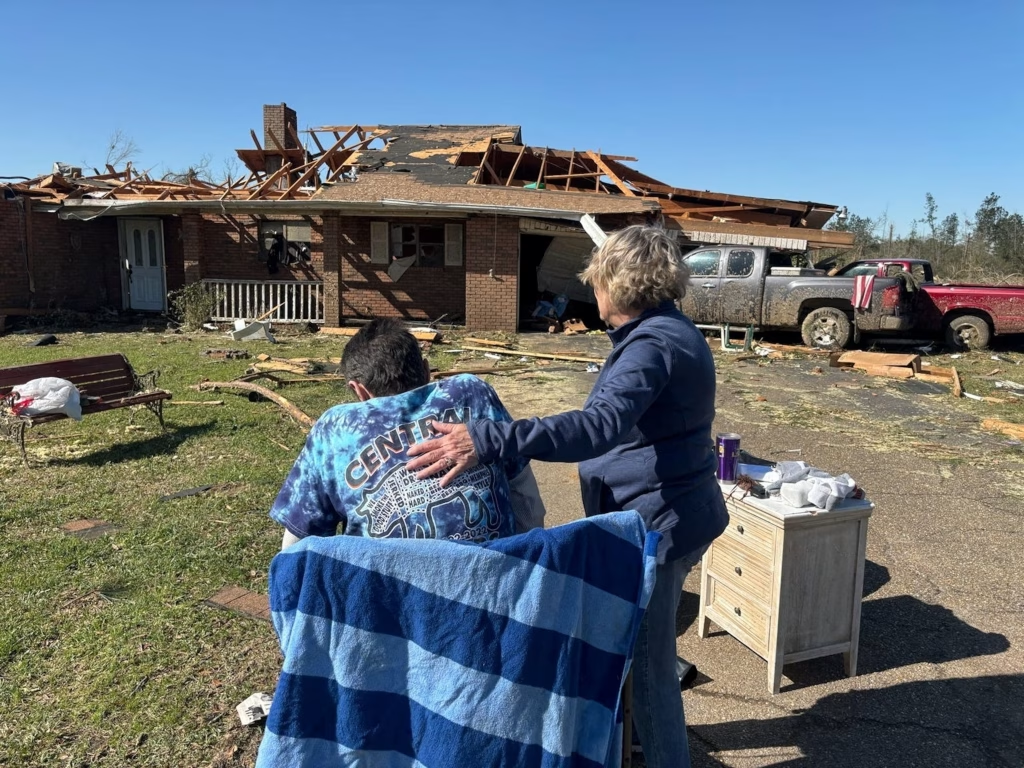
A devastating outbreak of tornadoes and severe storms swept across the United States over the weekend, claiming at least 42 lives and leaving widespread destruction in multiple states. Among the victims were two young brothers, aged 11 and 13, who lost their lives when a tree fell on their mobile home in North Carolina. The storm system, which spanned the South and Midwest, triggered tornadoes, wildfires, and dust storms, impacting thousands of residents.
Deadly Tornado Outbreak and Extreme Weather
According to the National Weather Service (NWS) (weather.gov), meteorologists had issued a rare “high risk” warning ahead of the storm. Preliminary reports indicate that at least 46 tornadoes struck on Friday, followed by another 41 on Saturday. The severe weather also brought destructive winds and heavy rain, exacerbating damage in already vulnerable areas.
Missouri reported the highest death toll, with 13 fatalities due to multiple tornadoes. Mississippi followed closely, with six deaths and over 200 residents displaced. Other states hit hard by the storm system included:
- Alabama: Three fatalities and extensive property damage in Plantersville.
- Arkansas: Three reported deaths and numerous injuries.
- Oklahoma: Wildfires fueled by high winds resulted in four deaths and the destruction of over 400 homes.
- Kansas & Texas: Dust storms led to major highway accidents, claiming eight lives in Kansas and three in Texas.
Tragic Loss in North Carolina

Among the most heart-wrenching stories was the loss of two young brothers in North Carolina. Early Saturday morning, as severe storms swept through the region, strong winds uprooted a tree that fell onto their single-wide mobile home, killing both children. Emergency responders arrived at the scene, but the boys did not survive. Their names have not been released to the public out of respect for their grieving family.
Government Response and Relief Efforts
Federal and state authorities have mobilized resources to assist affected communities. President Joe Biden has pledged federal assistance, directing FEMA (Federal Emergency Management Agency) (fema.gov) to coordinate disaster relief efforts.
Governors in the hardest-hit states have declared emergencies, allowing for quicker deployment of resources and financial aid. Local authorities are working to restore power, clear debris, and provide temporary shelters for displaced residents.
Rescue and Recovery Efforts Underway
First responders, along with volunteers from organizations such as the American Red Cross (redcross.org), are actively assisting those affected. Search-and-rescue teams continue working through debris to locate missing individuals, while hospitals treat those injured by the storm.
Meteorologists Warn of More Severe Weather
Forecasters have warned that another round of severe weather could impact some of the same regions in the coming days. Residents are urged to stay alert and follow weather advisories issued by the National Oceanic and Atmospheric Administration (NOAA) (noaa.gov).
How to Stay Safe During Tornadoes?
Given the increasing frequency and intensity of storms, experts advise residents to be prepared. Here are some safety measures:
- Stay Informed: Monitor weather updates through NOAA Weather Radio or emergency alerts.
- Identify a Safe Shelter: Seek refuge in a basement, storm cellar, or an interior room without windows.
- Prepare an Emergency Kit: Include essentials such as water, non-perishable food, flashlights, batteries, and a first-aid kit.
- Follow Evacuation Orders: If advised to evacuate, do so immediately.
Community Efforts and Support

Communities affected by the storms are coming together to support one another. Donation drives and relief funds are being organized to aid families who have lost their homes and belongings. Individuals looking to help can contribute to relief efforts through organizations such as Feeding America (feedingamerica.org) and United Way (unitedway.org).
A Nation in Mourning
The devastating storms have left a deep impact on communities across the South and Midwest. Families are grieving the loss of loved ones, and many face the daunting task of rebuilding their lives.
As the nation recovers, officials emphasize the importance of preparedness for future severe weather events. The increasing intensity of storms serves as a reminder of the need for improved infrastructure and disaster response strategies to protect vulnerable communities.



